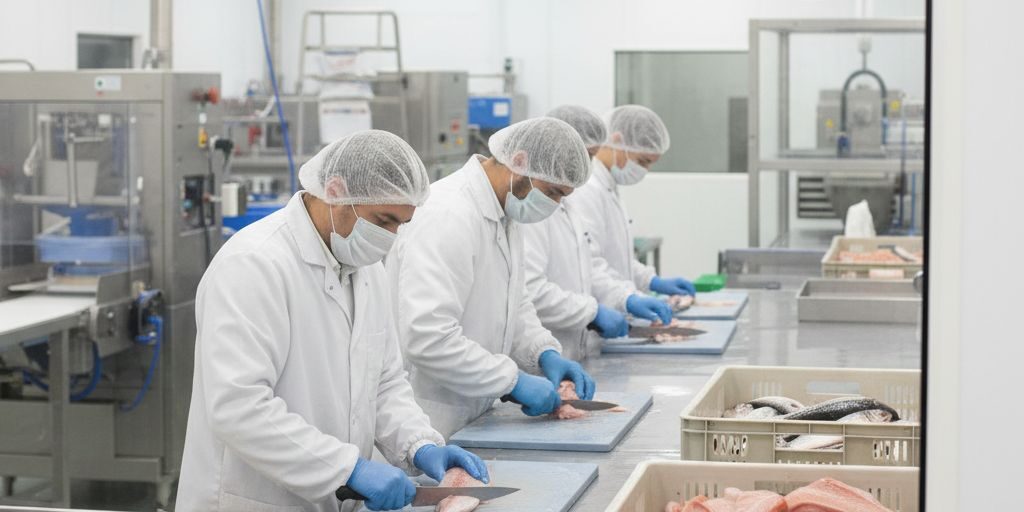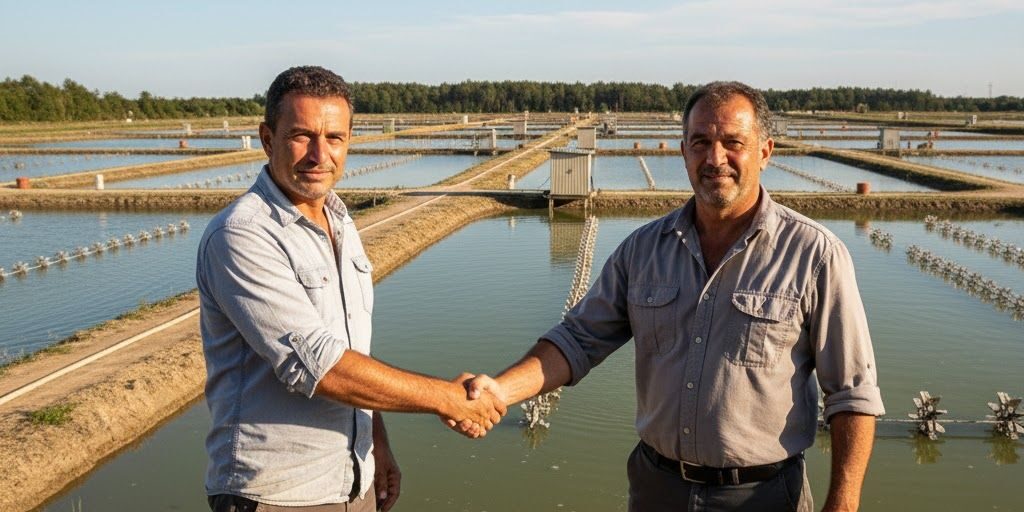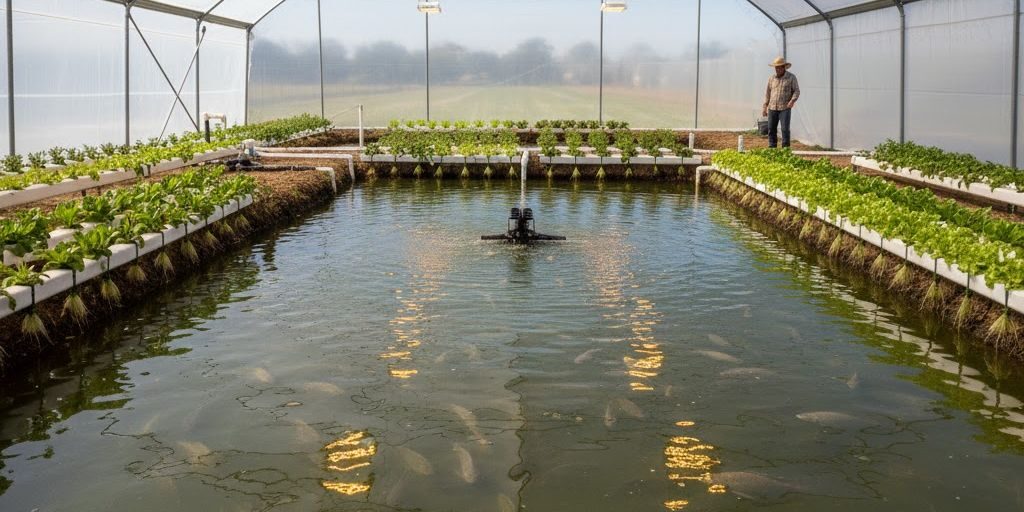- Software Gestor para Aquicultura
- (85) 2139-6730
- contato@despesca.com.br
Beyond Raw Product Sales: How to Add Value to Your Product and Conquer New Markets

HACCP (Hazard Analysis and Critical Control Points): Implementing a Food Safety System on Your Farm
15/09/2025
Water Quality Continuous Monitoring: The Cost of Not Measuring
17/09/2025Selling high-quality raw produce is the first step to success in the food sector. But in an increasingly competitive market, producers who want to stand out and increase their profitability need to go further. Value addition, through techniques such as filleting, producing pre-cooked items, and differentiated packaging, is the way to transform a simple item into a complete solution for the modern consumer, opening doors to new niches and consolidating the brand.
This detailed guide, applying SEO techniques, will explore how you can go beyond raw product sales, transforming your production and achieving surprising results.
The Importance of Adding Value: Why Step Out of Your Comfort Zone?
Today’s consumer seeks, above all, practicality, convenience, and an enhanced consumption experience. Long hours in the kitchen are no longer part of many families’ routines, as they prioritize easy-to-prepare, portioned foods with a presentation that inspires confidence and appetite.
By adding value to your product, you directly address these new demands, which translates into significant competitive advantages:
- Increased Profit Margin: Processed and well-packaged products have a higher perceived value, allowing for higher pricing.
- Market Differentiation: While many competitors offer raw produce, you deliver a solution, winning customer preference.
- Access to New Markets: Restaurants, delis, supermarkets, and even end-consumers are willing to pay more for products that simplify daily life.
- Waste Reduction: Processing can utilize parts of the food that would otherwise be discarded, generating new by-products and revenue.
- Brand Strengthening: A strong visual identity and quality packaging create a connection with the customer, fostering loyalty.
Filleting: The Precise Cut for Success
For producers of fish, poultry, and meat, filleting is one of the first and most impactful steps in value addition. Offering the product already cleaned, boneless, or deboned, and in ready-to-prepare portions is a huge differentiator.
How to Implement:
- Structure and Legislation: It is crucial to have a clean, refrigerated handling area that complies with local health surveillance regulations. For small-scale productions, legislation tends to be more flexible, but hygiene is non-negotiable.
- Techniques and Training: Invest in knowledge of the correct filleting techniques for each type of product, ensuring maximum yield and a standardized, attractive cut.
- Equipment: Quality knives, stainless steel tables, and vacuum sealers are initial investments that guarantee the quality and safety of the final product.
Advantages of Filleting:
- Attraction for Restaurants and Chefs: Professional kitchens seek agility and standardization, becoming loyal customers of filleted product suppliers.
- Conquest of the End Consumer: The practicality of having the product ready for the pan is an unbeatable selling point in retail.
- Optimization of Transport and Storage: Fillets take up less space and are easier to store and transport safely.
Pre-Cooked and Ready-to-Eat: The Convenience Revolution
The trend of pre-cooked and ready-to-eat foods is here to stay. Seasoned skewers, artisanal burgers, sanitized and chopped vegetables, or even complete frozen meals are examples of how creativity can transform raw materials into an almost instant meal.
Ideas to Get Started:
- Seasoned Line: Offer your cuts of meat, poultry, or fish already seasoned with exclusive marinades, ready to grill or roast.
- Preparation Kits: Create kits with all ingredients portioned and sanitized for preparing a specific recipe (e.g., moqueca kit, yakisoba kit).
- Cooking and Freezing: For those who want to go further, investing in an industrial kitchen to produce ready-to-eat frozen meals, such as lasagnas, shepherd’s pies, and broths, is a promising path.
Points of Attention:
- Shelf Life and Conservation: The pre-cooking and freezing process requires rigorous temperature and hygiene control to ensure food safety and product shelf life.
- Nutritional Labeling: Processed products require clear labeling with information on ingredients, manufacturing date, expiry date, and preparation instructions.
Differentiated Packaging: First Impressions Last
Packaging is the customer’s first point of contact with your product. It not only protects and preserves food but also communicates your brand’s values and directly influences the purchasing decision.
Innovate in Presentation:
- Vacuum Packaging: In addition to increasing product shelf life, vacuum packaging conveys an image of professionalism and hygiene, allowing for full visualization of the food.
- Sealed Trays and Modified Atmosphere: Ideal for fresh and processed products, these packages ensure the maintenance of color, texture, and flavor for longer.
- Design and Visual Identity: Invest in a professional and attractive label. Use colors, fonts, and images that represent the quality and origin of your product. Tell a story!
- Sustainability: Recyclable, biodegradable, or sustainably sourced packaging is a significant differentiator for an increasingly conscious public.
- Creative and Functional Packaging: Think about formats that facilitate consumption, such as packaging that can go directly into the microwave or that transforms into a serving container.
Marketing and Disclosure: Show the World Your Value
It’s no use having an incredible product if your target audience doesn’t know it exists. Marketing is the bridge that connects your production to the consumer.
- Know Your Customer: Understand who you want to reach. Is it the sophisticated restaurant? The family looking for practicality? The health-conscious consumer?
- Quality Photography: Professional and appetizing images of your products are essential to arouse purchase desire, especially on social media.
- Online Presence: Create profiles on Instagram and other relevant networks for your audience. Show behind-the-scenes glimpses of your production, give recipe tips, and interact with your followers.
- Strategic Partnerships: Collaborate with digital influencers in gastronomy, chefs, and local small businesses to expand your brand’s reach.
Going beyond raw product sales is a strategic step for the growth and sustainability of your business. By investing in filleting, pre-cooked items, and differentiated packaging, you are not just selling food, but a complete solution that meets the needs and desires of the modern consumer, ensuring a prominent place in the market and a prosperous future for your production.




